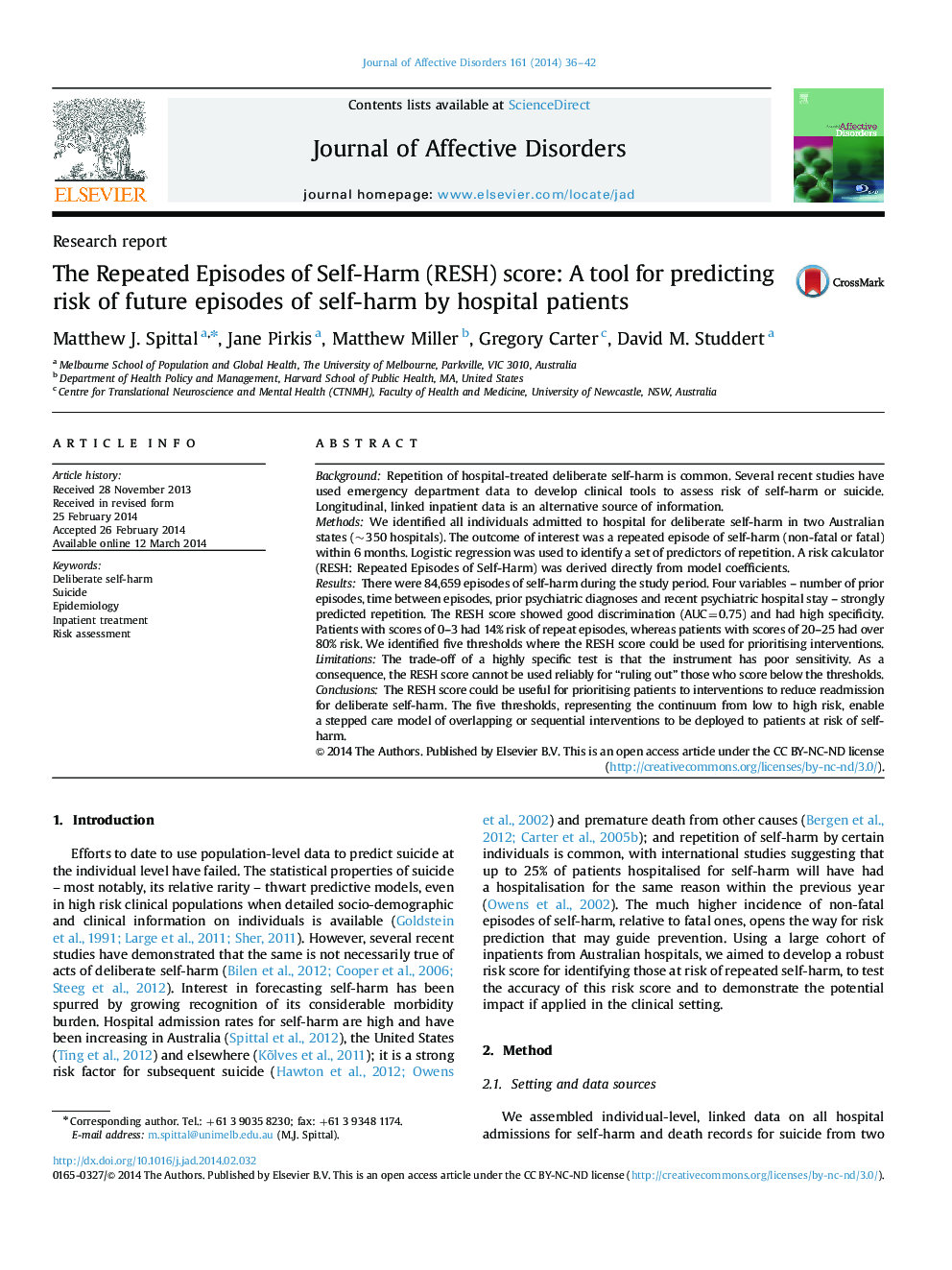| کد مقاله | کد نشریه | سال انتشار | مقاله انگلیسی | نسخه تمام متن |
|---|---|---|---|---|
| 6232912 | 1608164 | 2014 | 7 صفحه PDF | دانلود رایگان |

BackgroundRepetition of hospital-treated deliberate self-harm is common. Several recent studies have used emergency department data to develop clinical tools to assess risk of self-harm or suicide. Longitudinal, linked inpatient data is an alternative source of information.MethodsWe identified all individuals admitted to hospital for deliberate self-harm in two Australian states (~350 hospitals). The outcome of interest was a repeated episode of self-harm (non-fatal or fatal) within 6 months. Logistic regression was used to identify a set of predictors of repetition. A risk calculator (RESH: Repeated Episodes of Self-Harm) was derived directly from model coefficients.ResultsThere were 84,659 episodes of self-harm during the study period. Four variables - number of prior episodes, time between episodes, prior psychiatric diagnoses and recent psychiatric hospital stay - strongly predicted repetition. The RESH score showed good discrimination (AUC=0.75) and had high specificity. Patients with scores of 0-3 had 14% risk of repeat episodes, whereas patients with scores of 20-25 had over 80% risk. We identified five thresholds where the RESH score could be used for prioritising interventions.LimitationsThe trade-off of a highly specific test is that the instrument has poor sensitivity. As a consequence, the RESH score cannot be used reliably for “ruling out” those who score below the thresholds.ConclusionsThe RESH score could be useful for prioritising patients to interventions to reduce readmission for deliberate self-harm. The five thresholds, representing the continuum from low to high risk, enable a stepped care model of overlapping or sequential interventions to be deployed to patients at risk of self-harm.
Journal: Journal of Affective Disorders - Volume 161, 1 June 2014, Pages 36-42